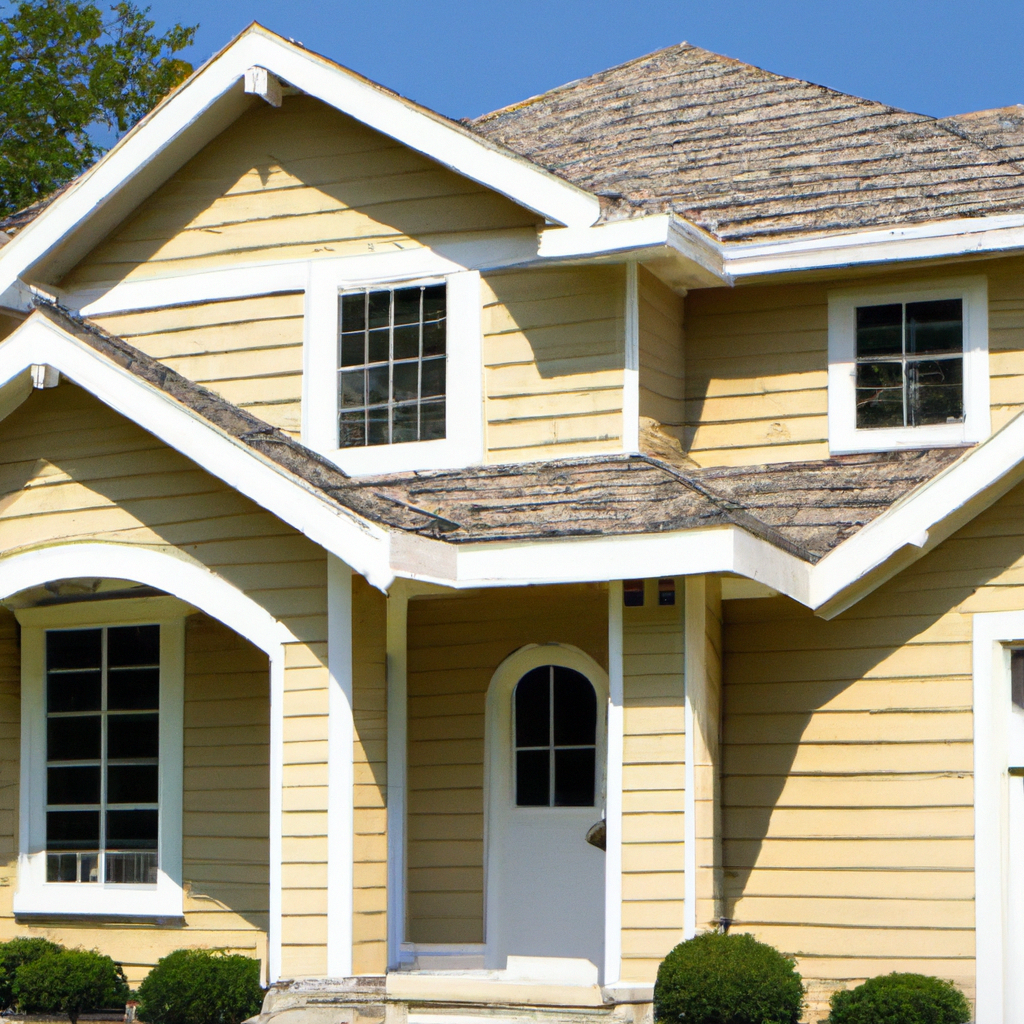Are unsightly cracks and chips in your stucco giving you sleepless nights? Look no further! Our expert team is here to provide top-notch stucco repair services that will restore the beauty of your home. Whether it’s a small patch or a larger project, you can count on us to deliver exceptional results and impeccable craftsmanship. Say goodbye to those pesky imperfections and hello to a flawless stucco finish that will leave your neighbors in awe. Trust us to bring your home back to its former glory with our reliable and friendly stucco repair services.
Common Stucco Problems
Cracks
One of the most common problems with stucco is the development of cracks. These cracks can occur due to a variety of reasons, such as settling of the building, changes in temperature, or improper installation. Cracks can be small hairline fractures or larger fissures that run through the stucco surface. It is important to address these cracks promptly to prevent further damage and water infiltration.
Blistering
Blistering is another common issue that can occur with stucco. This problem typically arises when moisture gets trapped behind the stucco surface, causing the material to bubble up and form blisters. Blistering can be caused by improper installation, lack of proper moisture barriers, or poor ventilation. If left unaddressed, blistering can lead to more significant damage and deterioration of the stucco.
Efflorescence
Efflorescence refers to the white powdery substance that can appear on the surface of stucco. This phenomenon occurs when soluble salts in the stucco mix are brought to the surface by water and then left to dry. Efflorescence is often a sign of excess moisture in the stucco, and it can not only affect the appearance of the stucco but also indicate potential underlying issues such as poor drainage or water infiltration.
Assessing the Damage
Visual Inspection
When assessing stucco damage, the first step is to visually inspect the affected areas. Look for cracks, blisters, or efflorescence and note the size and severity of these issues. Pay attention to any discoloration or staining as well. Visual inspection can help you determine the extent of the damage and guide your repair approach.
Moisture Testing
Moisture testing is crucial to identify any areas of excess moisture behind the stucco. Use a moisture meter to measure the moisture content of the stucco. High moisture levels can indicate water infiltration or poor moisture management, which can contribute to various stucco problems. Identifying and addressing these issues early on is essential to prevent further damage.
Sound Testing
Sound testing involves tapping on the stucco surface with a small hammer and listening for differences in sound. A hollow or dull sound could indicate delamination or detachment of the stucco from the substrate. This can be a sign of more serious underlying issues that need to be addressed during the repair process.

Preparing for Stucco Repair
Gathering Materials and Tools
Before starting any stucco repair, gather all the necessary materials and tools. Some common materials you may need include caulk or patching compound, bonding agent, stucco mix, and primer. Additionally, ensure you have the right tools such as trowels, brushes, utility knives, and masonry drill bits. Having everything ready will make the repair process more efficient.
Protecting Surrounding Areas
When repairing stucco, it’s essential to protect the surrounding areas to avoid any damage. Cover windows, plants, and other adjacent surfaces with plastic sheeting or drop cloths. This will prevent any accidental splatters or debris from damaging these areas during the repair process. Taking precautionary measures will help you complete the repair without causing additional problems.
Repairing Small Stucco Cracks
Cleaning the Crack
Before repairing small stucco cracks, clean the affected area thoroughly. Remove any loose debris, dirt, or old caulking using a wire brush or scraper. Ensure that the crack is clean and free of any loose particles to allow for proper adhesion of the repair material.
Applying Caulk or Patching Compound
Choose an appropriate caulk or patching compound that is designed for stucco repairs. Use a caulk gun or a putty knife to apply the material into the crack, ensuring that it fills the entire void. Smooth the surface of the repair material using the putty knife to create a seamless blend with the existing stucco.
Smoothing the Surface
Once the caulk or patching compound has hardened, use a trowel or sandpaper to smooth the surface of the repair. Blend the patched area with the surrounding stucco, creating a seamless finish. Pay attention to the texture and ensure it matches the rest of the stucco for a visually pleasing result.
Repairing Larger Stucco Cracks
Cutting Out the Damaged Section
For larger cracks in the stucco, it may be necessary to cut out the damaged section. Use a masonry drill bit to create holes at the end points of the crack, ensuring they are slightly wider than the crack itself. Then, use a masonry saw or grinder to carefully cut along the groove, creating a clean and straight line. Remove the cut-out section to prepare for repair.
Applying Bonding Agent
Before applying new stucco, it’s important to apply a bonding agent to the prepared area. This will help ensure proper adhesion and prevent future cracks or detachment. Follow the manufacturer’s instructions to apply the bonding agent, ensuring it covers the entire exposed surface.
Installing New Stucco
Mix the stucco according to the manufacturer’s instructions, ensuring the consistency is appropriate for the repair. Apply the stucco to the damaged area using a trowel, smoothing it evenly and feathering it out towards the surrounding stucco. Let the patch dry and cure according to the recommended time before moving on to finishing the repair.
Dealing with Blistering Stucco
Removing the Blisters
To address blistering stucco, start by removing the blisters. Use a utility knife or scraper to carefully cut or scrape away the blistered sections, taking care not to damage the undamaged stucco nearby. Ensure that all loose material is removed to create a clean surface for the repair.
Applying a Stucco Patch
After removing the blisters, apply a stucco patch to the damaged area. Follow the manufacturer’s instructions for mixing the patch material and apply it evenly with a trowel. Feather the edges of the patch to blend it with the surrounding stucco, ensuring a seamless appearance. Allow the patch to dry completely before moving on to finishing touches.
Removing Efflorescence from Stucco
Cleaning the Surface
To remove efflorescence from stucco, start by cleaning the surface. Use a stiff bristle brush or pressure washer to scrub away the white powdery substance. Be cautious not to apply excessive force that could damage the stucco. Clean thoroughly until no efflorescence remains.
Applying a Mild Acid Solution
Once the surface is clean, apply a mild acid solution to help neutralize any remaining salts. Mix water with a mild acid, such as white vinegar or a commercial efflorescence cleaner, following the manufacturer’s instructions. Carefully apply the solution to the stucco using a brush or sprayer, ensuring it covers the affected areas. Rinse the stucco thoroughly after the recommended dwell time to remove any traces of the acid solution.
Replacing Damaged Stucco
Removing the Damaged Stucco
In cases where stucco damage is extensive and cannot be adequately repaired, it may be necessary to remove the damaged stucco entirely. Use a chisel or hammer to carefully chip away the damaged sections, taking care not to damage the underlying substrate. Clear away all debris and ensure the area is clean and ready for new stucco application.
Applying a Stucco Patch or New Layer
Once the damaged stucco has been removed, follow the same steps as repairing larger cracks to replace the stucco. Apply a bonding agent, mix the new stucco, and install it onto the prepared area. Smooth and feather the edges, matching the texture of the surrounding stucco. Allow the new stucco to cure and dry before proceeding with the finishing steps.

Finishing the Stucco Repair
Allowing for Curing and Drying
After completing the stucco repair, it’s important to allow sufficient time for the materials to cure and dry. Follow the manufacturer’s instructions for the specific repair products used, as curing times may vary. Providing enough time for proper curing ensures a long-lasting and durable repair.
Painting or Sealing the Stucco
Once the stucco repair is fully dry, you can choose to paint or seal the surface. Painting the stucco can help improve its appearance, protect it from further damage, and enhance its durability. Alternatively, you can apply a clear sealer to protect the stucco while maintaining its natural look. Choose appropriate products for stucco and follow the manufacturer’s instructions for application.
Preventing Future Stucco Damage
Regular Inspection and Maintenance
To prevent future stucco problems, make it a habit to regularly inspect and maintain the stucco on your property. Look for signs of cracks, blisters, efflorescence, or any other damage. Address any issues promptly to prevent them from worsening and causing more significant damage.
Managing Moisture and Drainage
Proper moisture management and drainage are essential for preventing stucco damage. Ensure that the surrounding landscaped areas are properly graded to direct water away from the stucco walls. Install or maintain effective gutters and downspouts to prevent water from pooling near the stucco. Additionally, ensure that the stucco has adequate moisture barriers and ventilation to minimize the risk of moisture-related problems.
By being diligent in identifying and addressing stucco problems, you can maintain the integrity and beauty of your stucco surfaces. Whether it’s repairing cracks, addressing blistering, or removing efflorescence, following the appropriate steps and using the right materials will help ensure a successful stucco repair. Remember to prioritize regular inspections and proper moisture management to prevent future damage and maintain the longevity of your stucco.

